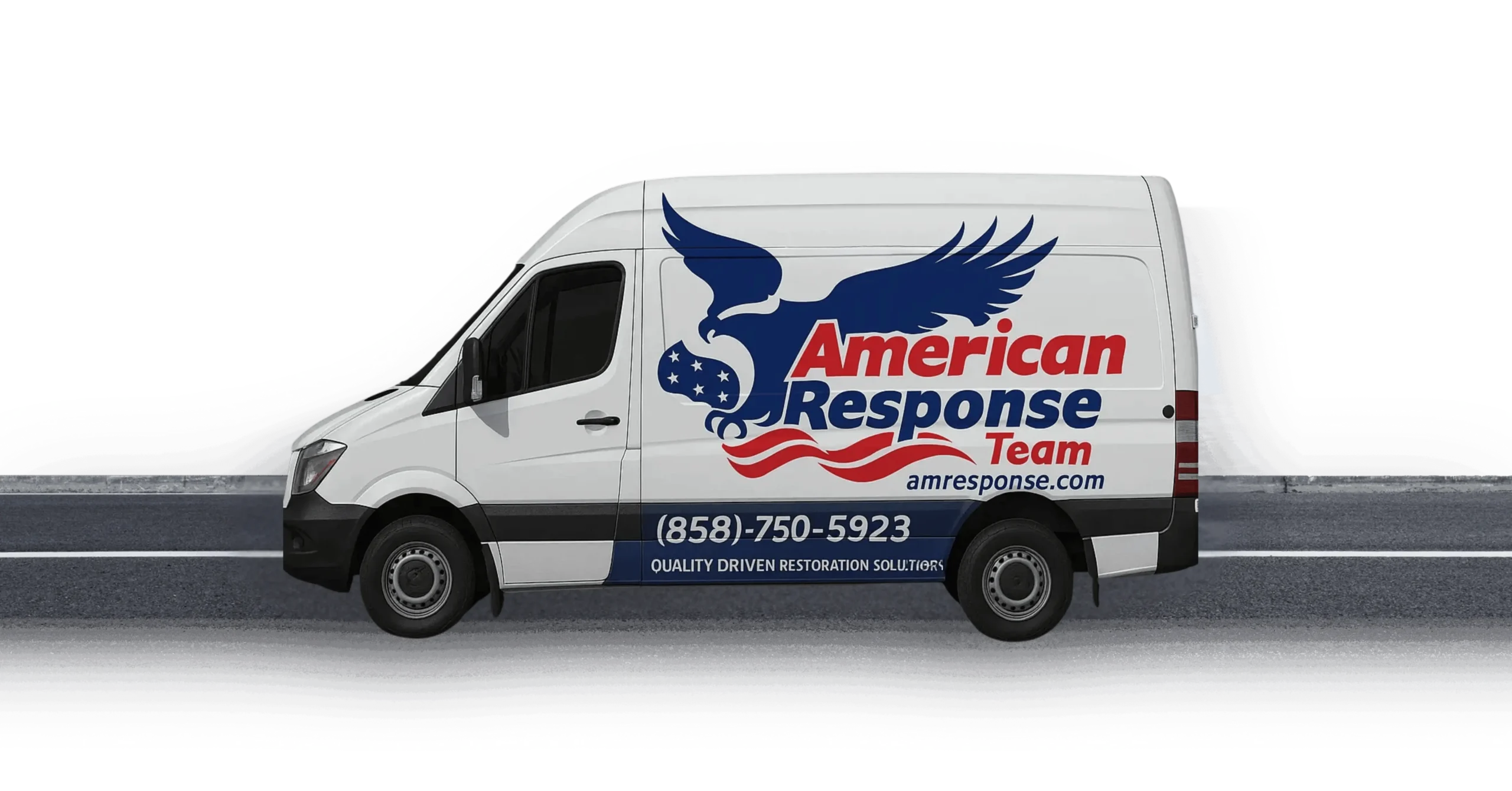A house fire changes everything in minutes. The smoke, the sirens, the chaos, you’re left with more questions than answers.
How much damage is there? Where will you stay tonight? And the one that causes the most stress: how do you deal with insurance after a house fire?
If you’re reading this, you may be in the middle of that mess—or maybe you’re planning ahead, just in case.
Either way, it’s overwhelming. Most homeowners have never filed a fire claim before, and when emotions are high, paperwork and insurance phone calls can feel impossible to manage.
You’re probably wondering:
- What do I say to the insurance company?
- How do I know if I’m getting a fair payout?
- Will they cover everything or just part of it?
- How do I keep from getting stuck paying out of pocket?
These are real concerns. At American Response Team, fire damage restoration is one of our main services, and we work directly with insurance providers every day.
We’ve seen how easily families get lost in the claims process. That’s why we help guide homeowners through it from the start.
In this blog, we’ll walk you through what to do, what not to do, and how to make the recovery process smoother and faster.
Step 1: Call Your Insurance Company Right Away
Once the fire department clears the scene and it’s safe to return, your first step is to notify your insurance company. Most providers have 24/7 claim lines.
When you call, be ready to share:
- Your policy number (if available)
- The date and time of the fire
- A brief description of what happened
- Whether the home is livable or not
You don’t need to give full details or an itemized list right away. That comes later. For now, your goal is to start the claim and get assigned an adjuster.
Pro Tip: If you can’t find your policy info, your agent or mortgage provider may have a copy.
Step 2: Document the Damage
Before any cleaning or removal begins, document everything—even if it feels painful. Take photos and videos of:
- Each room (even ones that weren’t burned)
- Structural damage (roof, walls, windows)
- Soot or smoke damage
- Destroyed furniture, appliances, and personal items
- Water damage from firefighting efforts
You’ll use this documentation to support your claim later. It helps prove what was damaged, how bad it was, and what needs to be replaced.
If you already started cleanup before reading this, don’t panic. Just take photos of whatever’s left and write down what you remember. Some documentation is always better than none.
Step 3: Don’t Throw Anything Away Yet
This is a common mistake. After a fire, you may feel the urge to clean up, especially when everything smells like smoke. But hold off on tossing anything, even if it looks ruined.
Why? Because your adjuster may need to see the damage in person or request receipts, photos, or samples to validate your claim. Tossing items too early can reduce your reimbursement, or get them denied completely.
At American Response Team, we help you identify what should be kept, cataloged, or carefully disposed of. You don’t have to figure that out alone.
Step 4: Review Your Coverage (We’ll Help If You’re Unsure)
Homeowners insurance usually covers fire damage, but the details vary depending on your policy. Coverage often includes:
- Structural repairs to the home
- Temporary housing if your home is unlivable
- Replacement or repair of personal belongings
- Smoke and soot cleanup
- Water damage restoration from firefighting efforts
However, every policy is different. Some may have limits or exclusions for certain items. Others may require receipts or proof of value. That’s why we always recommend going over your coverage with someone who knows what to look for.
Our team is trained to interpret policies and document restoration work using Xactimate—the same pricing system insurers use. This helps speed up approvals and ensures you’re not short-changed on your payout.
Step 5: Ask About Temporary Housing
If your home is unlivable, your policy may include Loss of Use coverage. This can pay for:
- Hotel stays
- Rental housing
- Increased food costs if you can’t cook at home
- Laundry and transportation
Let your insurance company know if you need somewhere to stay. Keep receipts for anything you pay out of pocket—you’ll likely be able to submit them later for reimbursement.
Step 6: Work With a Fire Restoration Specialist
One of the best things you can do is bring in a licensed fire damage restoration team right away. Here’s why:
- We know how to work with your adjuster. Our reports, photos, and pricing align with what insurance companies want to see.
- We help prevent secondary damage. Water and smoke can keep damaging your home after the fire is out.
- We make the cleanup and rebuild faster. You don’t have to find multiple contractors—just one team that handles it all.
- We help keep your costs low. Because we work with insurance pricing, you’re not stuck paying “emergency rates” out of pocket.
Learn more about our fire damage services
Step 7: Don’t Sign Off Too Soon
After inspections and paperwork, your insurance company may offer a settlement. But be careful: don’t accept a final payout until you’re sure all damage is covered.
Some things—like smoke damage in your HVAC system or water damage behind walls—take time to show up. That’s why working with a contractor who understands post-fire impacts is so important.
According to researchers at CIRES, toxic particles from smoke can stay in carpets, walls, and ventilation systems—especially if not cleaned properly. These lingering effects can affect your health and lower your home’s value.
Our team does a full walkthrough before and after cleanup to make sure nothing is missed. We’ll help you push back if the payout doesn’t reflect the full scope of damage.
What to Do If Your Claim Is Denied or Delayed
It happens. Sometimes insurance companies deny or reduce claims because they:
- Think the damage was pre-existing
- Disagree with the cost of repairs
- Say the fire wasn’t covered by your policy
If that happens, you don’t have to accept it right away. Here’s what you can do:
- Ask for a written explanation of the denial
- Request a second inspection
- Submit additional documentation
- Contact a public adjuster (we can refer you)
- Let us communicate directly with the insurer
At American Response Team, we’re advocates for our clients. We don’t just clean up the mess—we stand by you through the claim process.
Why Homeowners Choose American Response Team
We’re more than a restoration company. We’re a trusted partner in crisis. Here’s what you can expect when you work with us:
- Fast response and honest communication
- Licensed professionals trained in fire, smoke, and water restoration
- Insurance-friendly documentation and pricing (we use Xactimate)
- Help coordinating housing, cleanup, and rebuilds
- A team that truly cares about your recovery
We know how to handle insurance because we do it every day. We’re also a preferred vendor for several insurance carriers, which means less red tape and faster approvals.
The Bottom Line
Dealing with insurance after a house fire is stressful—but it doesn’t have to be confusing. You don’t have to figure it out alone, and you don’t have to accept less than what you deserve.
The key is to:
- Act fast
- Document everything
- Get expert help early
- Don’t settle until you’re sure you’re covered
We’ll guide you through the fire restoration process from day one—working directly with your insurance company, protecting your home from further damage, and helping you rebuild what was lost.

